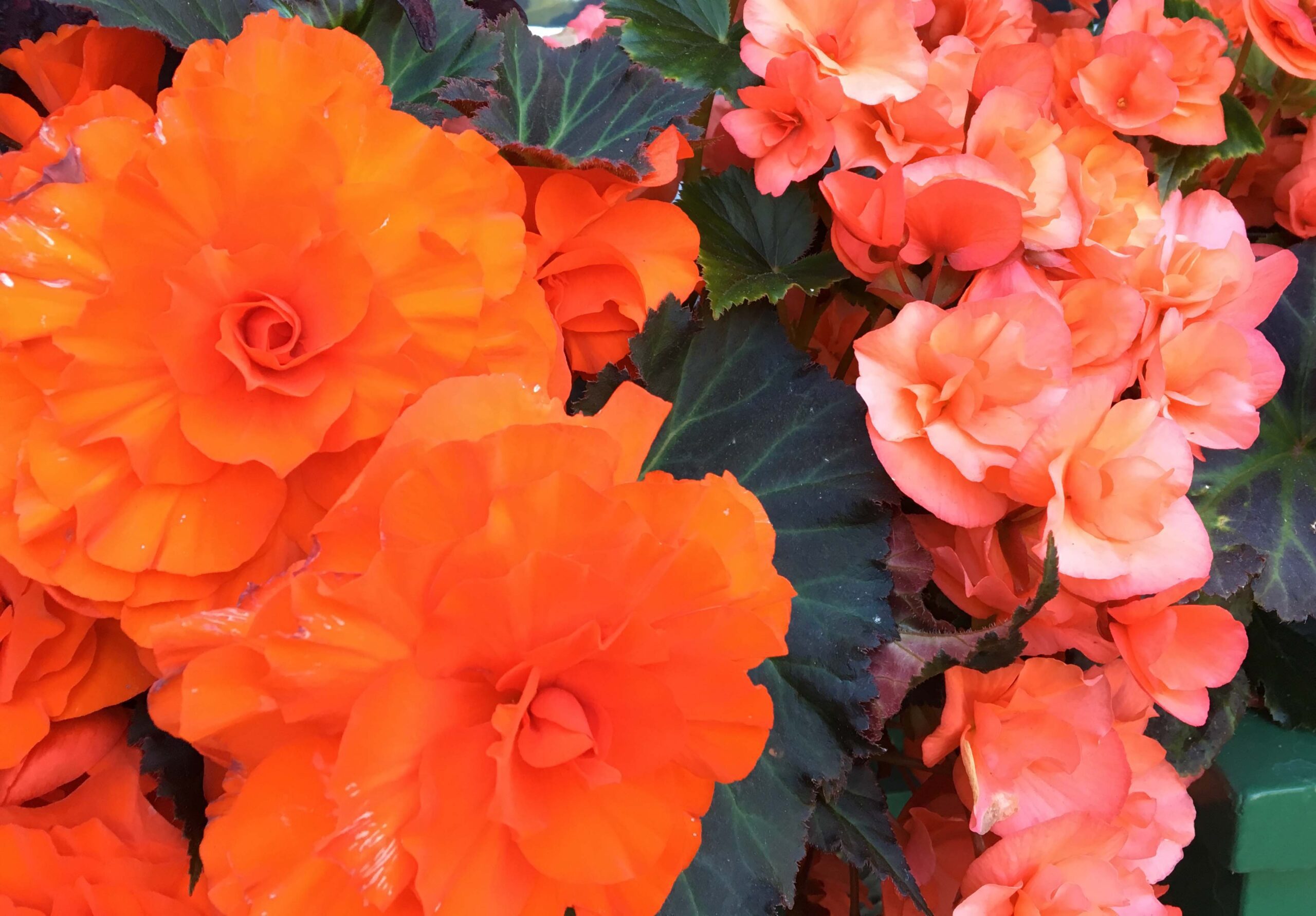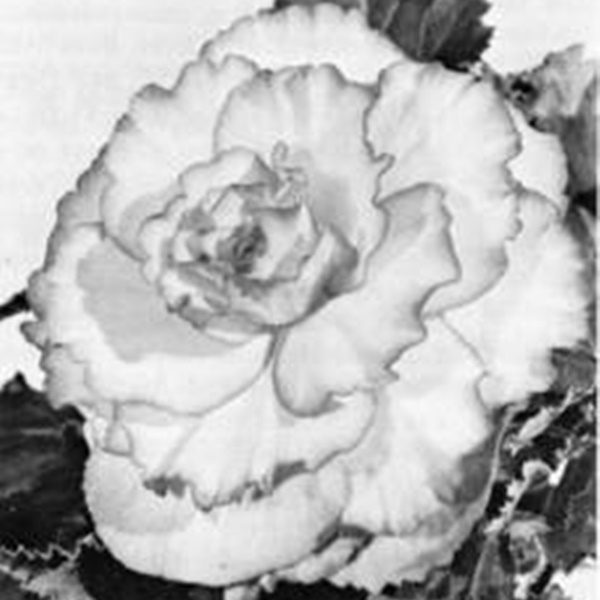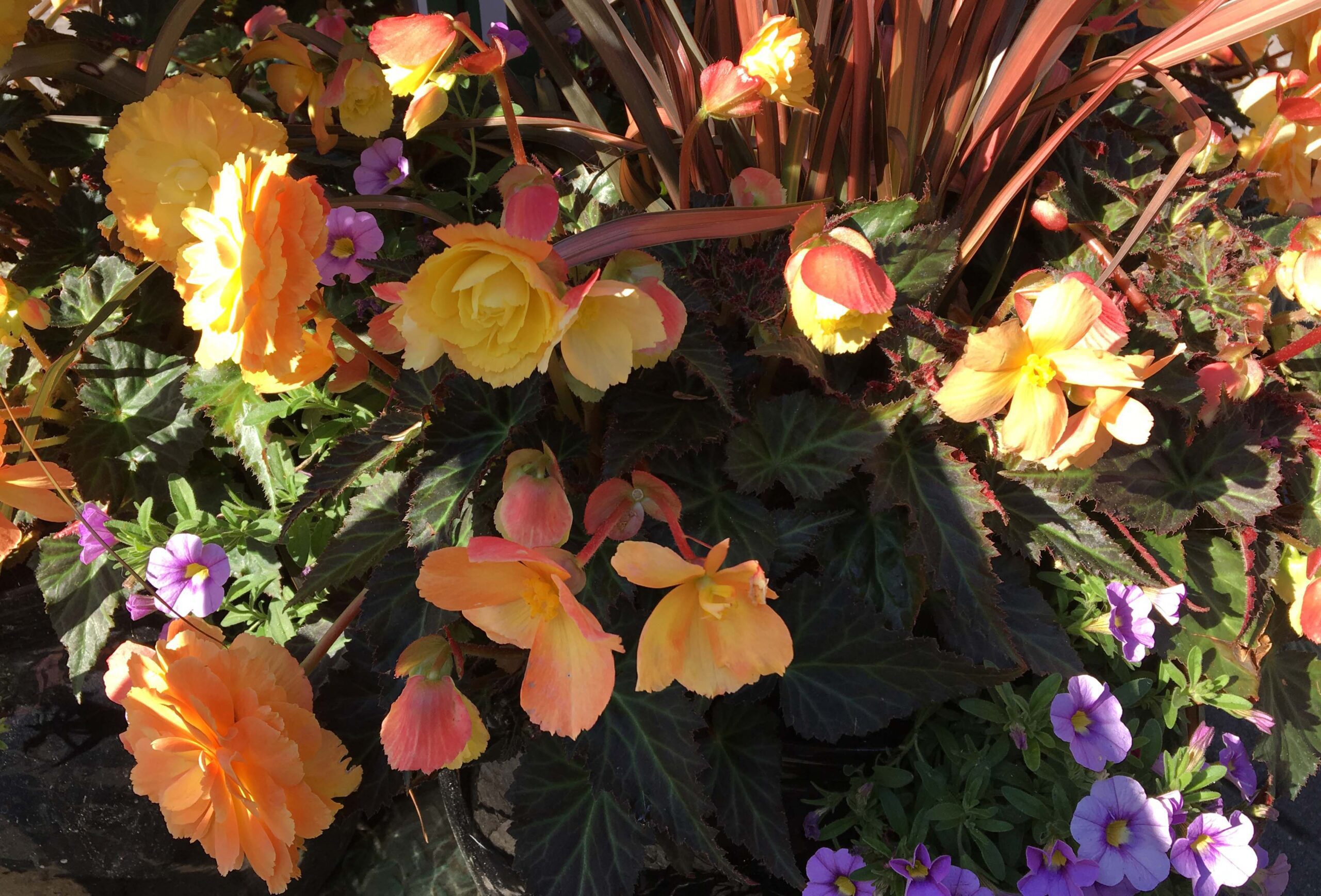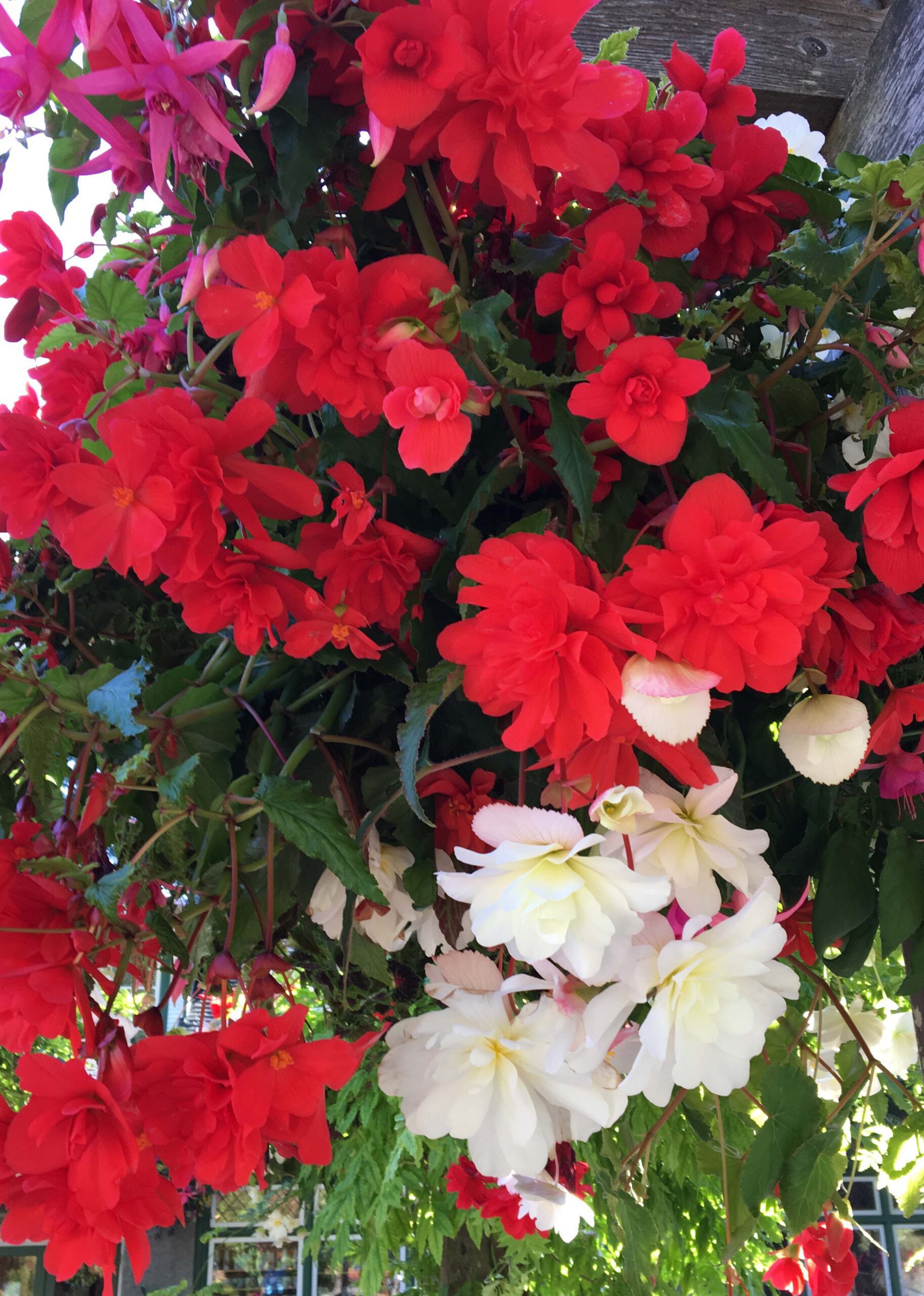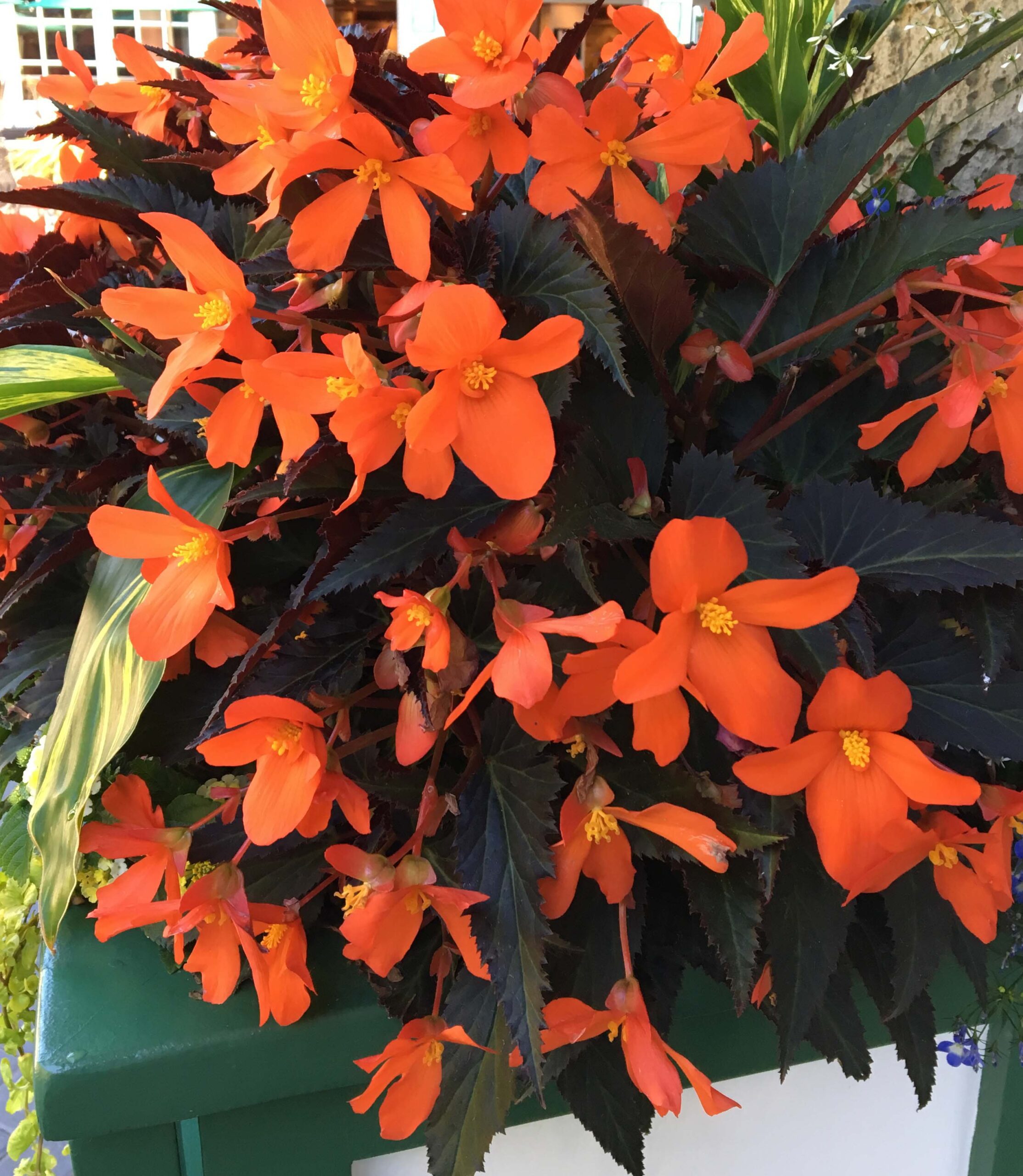Spectacular and diverse, the tuberous Begonia group is ignored by some because these plants usually have annual dormant periods. But enthusiasts scoff at this inconvenience because some of the show-stoppingest begonias are in this group.
You usually can tell a tuberous Begonia because of a swollen structure at the base of the stems, underground or at soil level. This is the tuber (or sometimes it is a bulb), whose function is to store water and nutrients during dormancy so the plant can start anew.
Although each classification in the tuberous group has its own cultural idiosyncracy or two, general practices are similar.
Most do best with plenty of filtered light but little or no direct hot sun.
Because they can rot from excessive amounts of water, a very coarse, fast-draining planter mix is required. Coarse perlite or leaf mold as a substantial part of the mix will do the trick. When you water, the excess will drain quickly. The large amount of air in the mix will require more frequent watering, though, in warm seasons.
Some, especially the Tuberhybrida begonias, need high humidity for adequate flowering. This can be provided through frequent misting early in the day or creation of a high-humidity section of a greenhouse.
A side effect of high humidity can be development of powdery mildew and other fungus diseases. These can be controlled with the fungicides karathane (to get rid of it) and benomyl (to prevent it). Always follow label directions exactly.
Some tuberous begonias grow upright, either without further assistance or with judicious staking to support the supple stems. Others trail and are well suited to use in hanging baskets.
Since most tuberous types are grown for their flowers, they are heavy feeders. This means you must fertilize a lot. The most frequently encountered method is to use a low-intensity complete fertilizer such as fish emulsion (5-1-1) early in the season to get a large, healthy plant. When buds appear, switch to a combination of 5-1-1 and bloom (such as 0-10-10) fertilizers, one tablespoon of each to one gallon of water, applied every two weeks. Or feed at half-strength weekly. Otherwise, follow label directions.
When leaves begin to yellow, flowers wither, and the plant slows down, stop fertilizing and water less frequently because dormancy is approaching. When the plant is dormant, some, such as Tuberhybrida, do best if the tubers are lifted and stored clean in a dry place. Others can be stored right in their pots.
Like most begonias, tuberous kinds grow best in warm and airy but comfortable-to-humans temperatures. They are perfect to display in places where you and guests spend a lot of time outdoors in summer.
Because of the diversity in this group, you’ll want to get further information on growing the kinds that have captured your interest. Many of the books listed on page 198 and back issues of The Begonian will help, as will information offered at meetings of ABS branches.

